Two hundred and thirty-five years after legendary Capt. John Paul Jones captured a 50-gun British warship while trying to keep his own converted merchant vessel from sinking, a Vinton history major joined the Navy in its efforts to find and preserve the lost Bonhomme Richard.
Katherine Dick, a 2011 Vinton-Shellsburg graduate and Luther College senior-to-be, spent her Washington Semester as an intern with the Underwater Archeology Branch of the Naval History and Heritage Command.
While studying a variety of historical Navy ships during the first few months of 2014, Katherine had two favorite projects, the Bonhomme Richard; and the Howell Torpedo which was fired from the USS Iowa and found on the Pacific Coast by a Navy dolphin.
“I really learned a lot in a short amount of time,” said Katherine.
Jones and the Bonhomme Richard
The Bonhomme Richard appeals to Katherine's love of studying the Revolutionary War. Katherine spent many hours reviewing Naval records of where the Bonhomme Richard sank in 1779, shortly after Jones and his crew defeated the British ship. She used Photoshop to make maps to add to the Navy's files on the ship, which historians believe went down off Flamborough Head near Yorkshire, England.
It was during this battle with the British battleship HMS Serapis that Jones famously said, “Sir, I have not yet begun to fight!”
Katherine says the Navy has a pretty good idea of where the ship sank, but the process of recovery is slow and tedious. The Navy is also concerned about treasure hunters disturbing the site or looters removing historic artifacts. She helped update reports about the wreckage and its location, working with others in the Underwater Archeology Branch.
While most modern Americans think of battles on the American side of the Atlantic, Jones was one of many Americans who took the battle to the shores of England, where the small American vessels – most of which were converted merchant ships from other countries – attempted to wreak havoc on British ship and keep the British forces focused on fighting away from the colonies.
Katherine’s 8th grade history teacher, Alexander Vasquez, explained some of the historical reasons for battles such as the one that made Jones famous.
“Basically, the United States Navy did not exist prior to the Revolution, and was quite weak until the Civil War,” Vasquez explans. “The French government loaned/gave several ships to the US during the Revolution, and one of these ships became the Bonnhomme Richard. The Royal Navy was able to raid the Atlantic Coast almost at will during the Revolution and most of the War of 1812.
These French-sourced ships were not normally capable of direct combat with British men-o-war being smaller and slower but could raid British commercial shipping pretty effectively. Generally speaking, whatever cargo seized by the ship was eventually sold and the profits shared among the officers and crew. This gave an incentive to the ships to attack merchantmen but this also placed them at risk of being considered pirates by enemy governments.”
Attacking British commercial shipping in British waters had three major bonuses, says Vasquez. “One, it drew the Royal Navy back into their home waters, weakening efforts in North America. Two, it was embarrassing for the most-powerful sailing nation in the world to be subjected to attacks in their own waters; and three, anything seized could be sold in mainland Europe pretty quickly.”
In terms of frequency, this was a very common tactic used by the US during both the Revolution and War of 1812, says the teacher.
“After 1812 the US began a program of building coastal defense forts to keep enemy battleships from raiding the Atlantic Coast and our navy (with the exception being the Civil War) remained relatively small until Theodore Roosevelt's Presidency dramatically increased and modernized it,” Vasquez adds.
Katherine said the assignment helped her have a deeper understanding of Jones and his battles.
“One of the reasons it was so surprising that the Bonhomme Richard won the battle (despite sinking) was because it was so small compared to the British ships. John Paul Jones was actually considered a pirate during much of his career and wasn't entombed at the Naval Academy until much, much later. His fame and importance came long after he died, which was still several years after BHR was sunk,” she says.
See the story of Capt. Jones and his historic battle at sea HERE.
The Howell Torpedo from the USS Iowa
In March of 2013, Navy dolpins (part of the U.S Navy Marine Mammal program) found the nearly century-old torpedo, which had been fired from the USS Iowa.
Part of Katherine’s duties as an intern with Underwater Archeology was assisting with this project. She saw the torpedo and efforts to remove silt and other debris first-hand, and helped with a variety of related research.
See more about that project HERE.
Impact
Katherine also toured the White House and met many famous people, including General Wilma Vaudt, the first woman to reach the rank of Brigadier General.
Now, back at home in rural Vinton, Katherine has a variety of souvenirs from her Washington Semester and UAB internship.
Along with the laptop full of photos and web links, Katherine has compiled a large folder containing reports regarding the many projects that kept her busy this past spring.
While the thick notebook contains information helpful to naval researchers, it also serves a a scrapbook of sorts.
“They told me the main reason I would want to make this is so I can remember everything I have done,” she said.
While Katherine leaves the program with many memories and new friends, she also may have received some guidance for the future. After finishing her history degree in the spring of 2015, she plans to enroll in law school, hopefully somewhere on the East Coast. Across the Anacostia River from the Navy’s Underwater Archeology Branch is JAG, the Navy Judge Advocate General Corps. Katherine met some of those JAG members and is interested in one day joining that corps. One of the areas of law practiced by JAG Corps is that of underwater Naval history, so there’s a chance that Katherine could one day be working again on historical relics like the Howell Torpedo or the Bonhomme Richard.
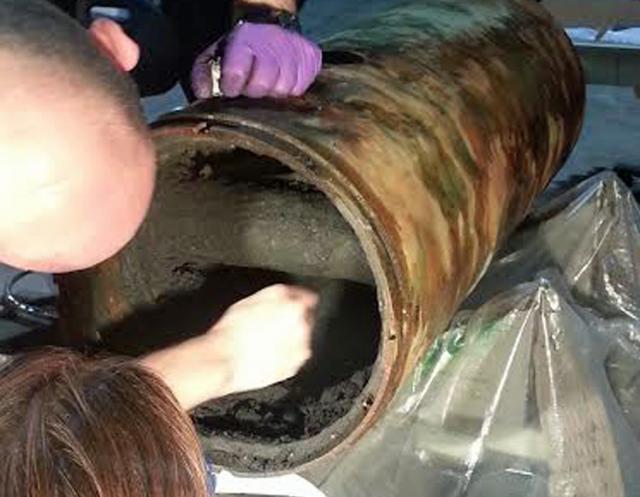
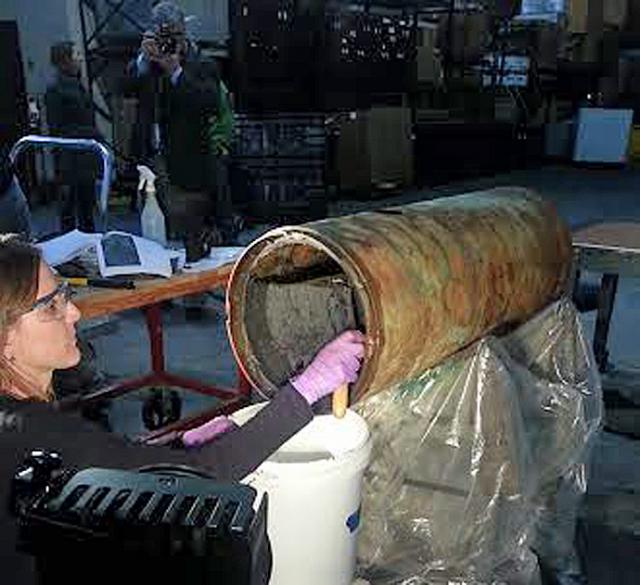
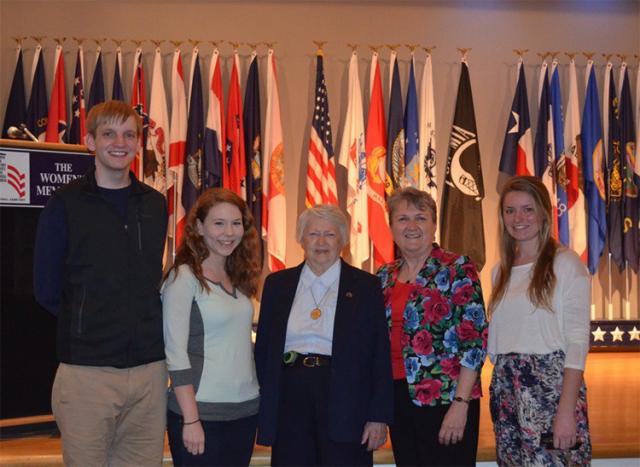

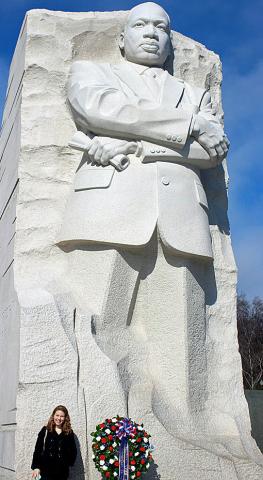
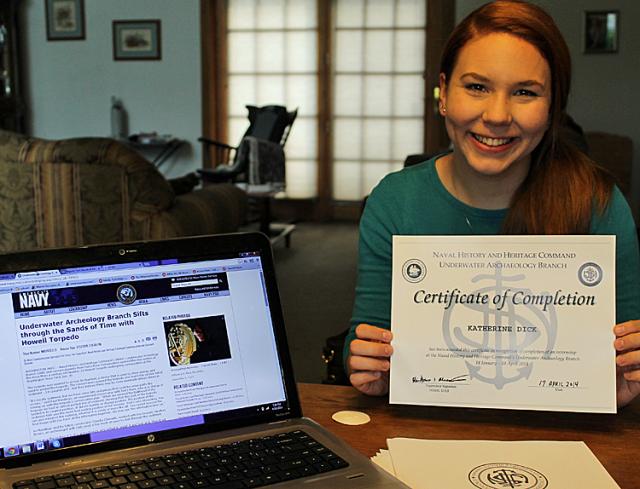
Comments
Submit a CommentPlease refresh the page to leave Comment.
Still seeing this message? Press Ctrl + F5 to do a "Hard Refresh".